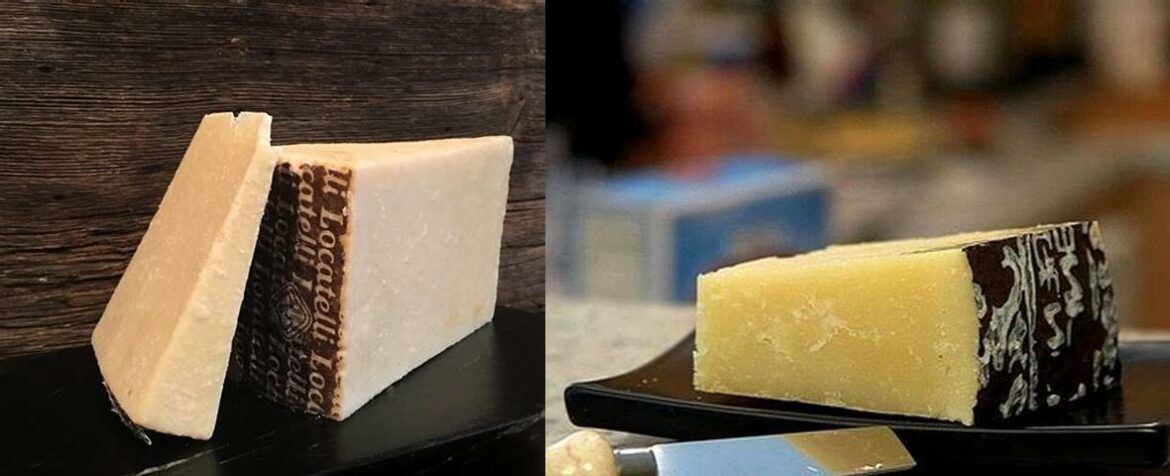Pecorino romano substitute: Looking to add a touch of Italian flair to your dishes but don’t have any Pecorino Romano on hand? Don’t fret! In this blog post, we’ll take you on a culinary journey to discover some delectable substitutes for this beloved cheese. Whether you’re a cheese connoisseur or just a food lover looking to spice up your recipes, we’ve got you covered. So, get ready to explore the world of Pecorino Romano substitutes and unlock a whole new realm of flavors. Let’s dive in!
Pecorino Romano: A Culinary Keystone with Worthy Substitutes
In the culinary world, few cheeses hold a place of reverence quite like Pecorino Romano. Crafted from sheep’s milk, this Italian gem possesses a distinct salty flavor and granular texture, making it an indispensable ingredient in countless dishes, from pasta and salads to sauces and casseroles. However, circumstances may arise when this culinary treasure proves elusive. Fear not, fellow gastronomes, for there exists a pantheon of worthy substitutes, each offering its unique flavor profile and culinary versatility.
Parmigiano-Reggiano: A Classic Italian Contender
Hailing from the fertile plains of Parma and Reggio Emilia, Parmigiano-Reggiano stands as a titan among cheeses. Aged for a minimum of 12 months, this hard, granular cheese boasts a complex symphony of flavors, ranging from sharp and nutty to fruity and slightly sweet. Its versatility knows no bounds, seamlessly complementing pasta dishes, risottos, salads, and antipasti platters.
Grana Padano: A Milder, Sweeter Alternative
Born in the heart of the Po Valley, Grana Padano shares many similarities with its illustrious cousin, Parmigiano-Reggiano. However, this cheese exhibits a milder and sweeter disposition, making it a more accessible option for those with sensitive palates. Its texture, while still firm and granular, is slightly more yielding, lending itself beautifully to grating and melting applications.
Manchego: A Spanish Delight with a Buttery Nuance
From the sun-drenched plains of La Mancha, Manchego emerges as a true Spanish treasure. Crafted from the milk of Manchega sheep, this cheese possesses a firm, yet supple texture and a flavor profile that dances between nutty and buttery, with hints of caramel and dried fruit. Its versatility shines in both savory and sweet dishes, from Manchego-stuffed dates to Manchego-crusted salmon.
Cotija: A Salty, Crumbly Mexican Gem
Hailing from the vibrant culinary landscape of Mexico, Cotija cheese brings a salty, tangy kick to the table. Its crumbly texture and sharp flavor make it an ideal topping for tacos, enchiladas, and tostadas. Cotija also excels as a flavorful addition to salads, soups, and even desserts.
Asiago: A Sharp, Tangy Cheese with a Nutty Undercurrent
Born in the verdant hills of Veneto, Asiago cheese presents a sharp, tangy flavor profile with a nutty undercurrent. Its texture ranges from semi-hard to hard, depending on the aging process, making it a versatile choice for various culinary applications. Asiago shines as a grating cheese, adding a burst of flavor to pasta dishes, pizzas, and casseroles. It also holds its own as a table cheese, served alongside fruits, nuts, and crackers.
Substituting Pecorino Romano: A Journey of Culinary Exploration
While Pecorino Romano remains a culinary cornerstone, its substitutes offer a world of flavor and texture to explore. Whether seeking a sharp and nutty alternative like Parmigiano-Reggiano, a milder and sweeter option like Grana Padano, a buttery and nutty delight like Manchego, a salty and crumbly kick like Cotija, or a sharp and tangy flavor with a nutty undercurrent like Asiago, the possibilities are endless. Embrace this journey of culinary exploration, experimenting with these substitutes to discover new flavor combinations and elevate your dishes to new heights.
FAQ about Pecorino Romano Substitute
Q: What is Pecorino Romano?
A: Pecorino Romano is a cheese made from sheep’s milk, known for its distinct salty flavor and granular texture.
Q: What dishes can Pecorino Romano be used in?
A: Pecorino Romano is commonly used in a variety of dishes, including pasta, salads, sauces, and casseroles.
Q: Why would I need a substitute for Pecorino Romano?
A: There may be circumstances where Pecorino Romano is not readily available or accessible, hence the need for a substitute.
Q: What is a good substitute for Pecorino Romano?
A: Parmigiano-Reggiano is a classic Italian cheese that can serve as a worthy substitute for Pecorino Romano.
Q: How does Parmigiano-Reggiano compare to Pecorino Romano?
A: Parmigiano-Reggiano has a complex flavor profile, ranging from sharp and nutty to fruity and slightly sweet, making it a versatile substitute for Pecorino Romano.
Q: Can Parmigiano-Reggiano be used in the same dishes as Pecorino Romano?
A: Yes, Parmigiano-Reggiano can be used in a similar way to Pecorino Romano, adding flavor and texture to pasta, salads, sauces, and casseroles.


